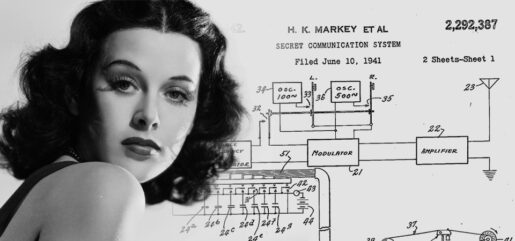Women’s History Month: Hedy Lamarr’s Role in the Invention of Wi-Fi
By Colleen LeCount, Mobolize | Chief Revenue Officer
March is Women’s History Month where we celebrate the vital role of women in American history. As a woman helping to manage a high-tech company that focuses on mobile devices that are often dependent on Wi-Fi, I was intrigued to learn that Hollywood actress Hedy Lamarr invented the technological innovation that would blossom into Wi-Fi, along with Bluetooth, GPS and mobile phones themselves.
Lamarr’s interest in science and invention started at age five when her curiosity about how things worked led her to dismantle and reassemble a music box. She began her career as a Hollywood in 1938 where she starred in films with Clark Gable and James Stewart. In Hollywood, she met George Antheil, an avant-garde composer who was composing music for films, but also understood music from the technical perspective of beats and scale.
How does an actress and a music composer from the early 1900s invent something that is the basis of the technology we use today? Lamarr’s curiosity and love of solving problems and Antheil’s understanding of piano roll using black and white keys led to their idea of frequency hopping. World War II had started, and torpedoes were a common weapon for both sides. Lamarr’s knowledge of the weapon was gained from her first husband, a munitions manufacturer. Their discussions of torpedoes grew into developing the idea for frequency hopping between a receiver and transmitter which they patented in 1941.
Lamarr realized that radio-controlled torpedoes were effective at sinking enemy ships, but they had a problem. Torpedoes could easily be detected and jammed by broadcasting interference at the frequency of the control signal and thus go off course, missing the target. Her idea was frequency hopping to make detection and jamming, difficult.
Here’s how it worked: like a piano roll, randomly change the signal sent between the control center and the torpedo at short bursts withing range of 88 frequencies on the spectrum. The specific code sequence of the frequencies would be identical for the control ship and the torpedo, but different for each torpedo sent, thus encrypting the signal and making it impossible for the enemy to scan and jam all 88 frequencies because it would require too much power.
Frequency hopping was Lamarr’s idea. Antheil developed the frequency hopping sequence using a player piano mechanism. The 88 frequencies? There are 88 black and white keys on a piano board.
Although the U.S. Navy engineers at the time rejected the patented invention (#2,292,387 filed June 10, 1941 and granted August 11, 1942), it was used in 1962 during the Cuban Missile Crisis when all U.S. military ships were armed with torpedoes guided by Lamarr’s and Antheil’s frequency hopping system.
From there came IEEE 802.11 standards, WaveLAN and ultimately the creation of Wi-Fi and wireless LAN technology. Today, Wi-Fi is the most popular network used for connecting devices in homes, businesses and public spaces. Bluetooth and GPS use the technology as do the mobile devices we carry.
Lamarr is called the Mother of Wi-Fi and is recognized for her invention. In this Woman’s History Month of 2021, those of us in the mobile device and Wi-Fi industry need to applaud her curiosity about using frequency-hopping spectrum technology and her invention that is the basis of many technologies we often take for granted today.
At Mobolize, we value diversity. During this month and always, we honor the many women who have and will continue to make an important mark on our industry and world.





